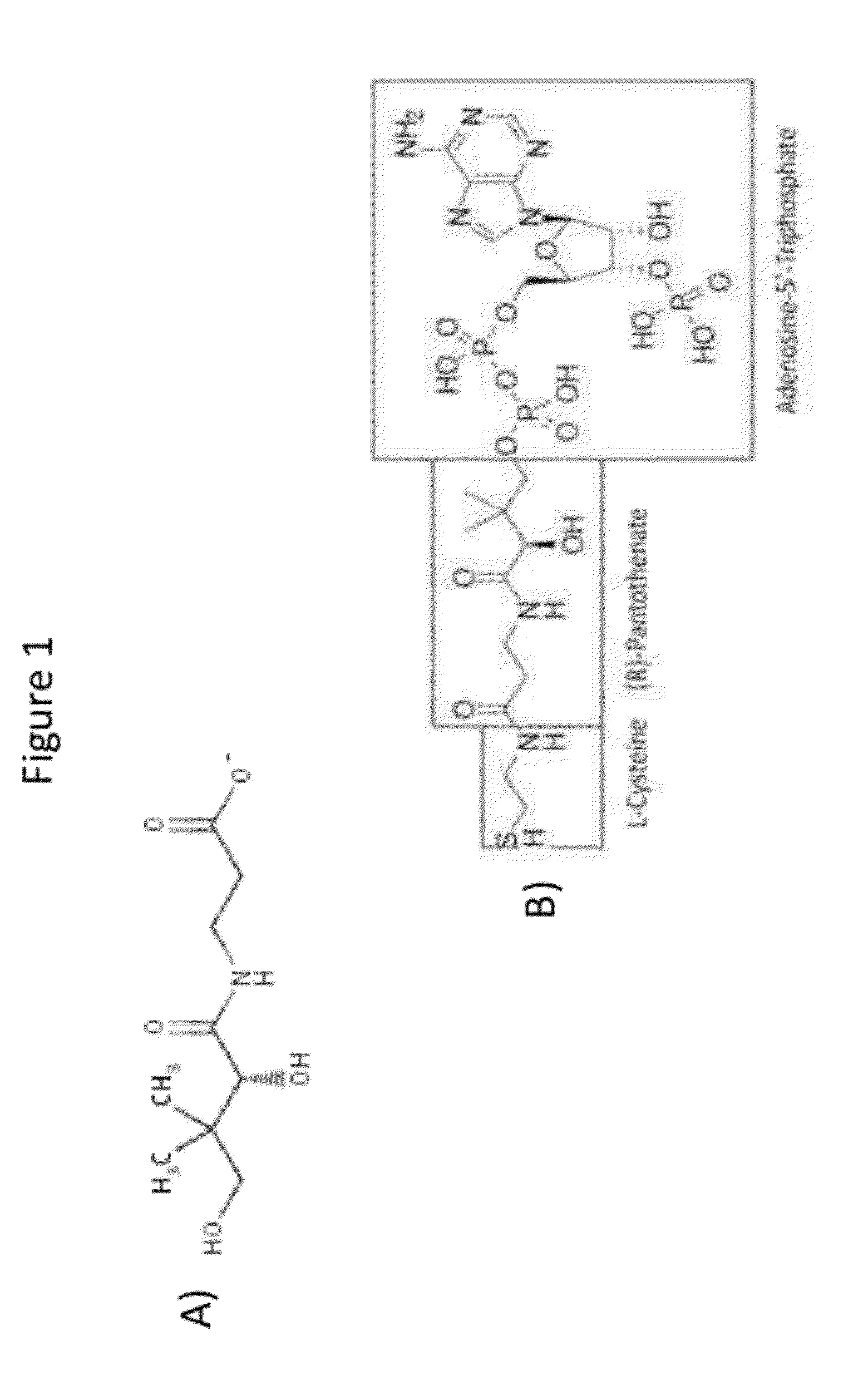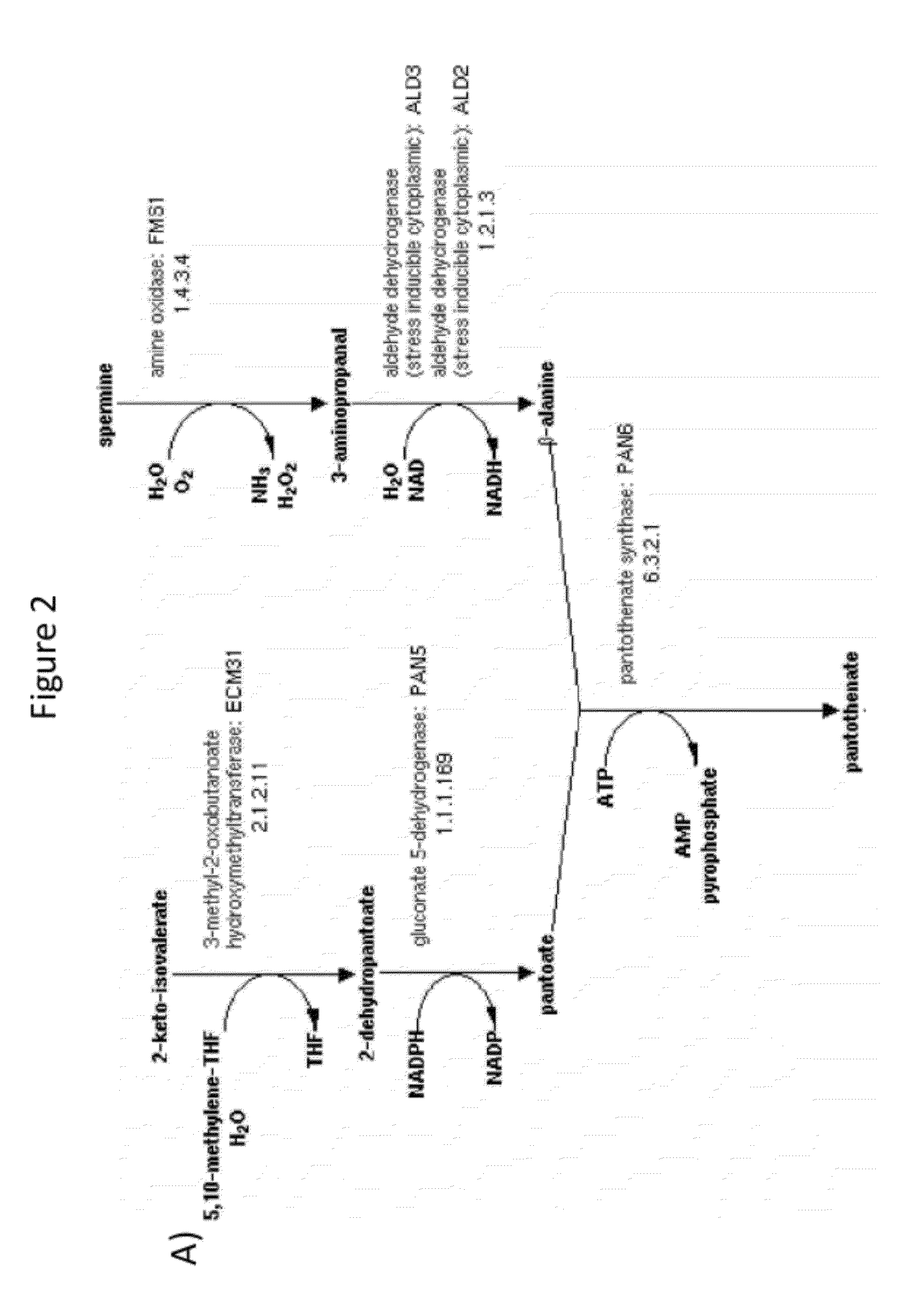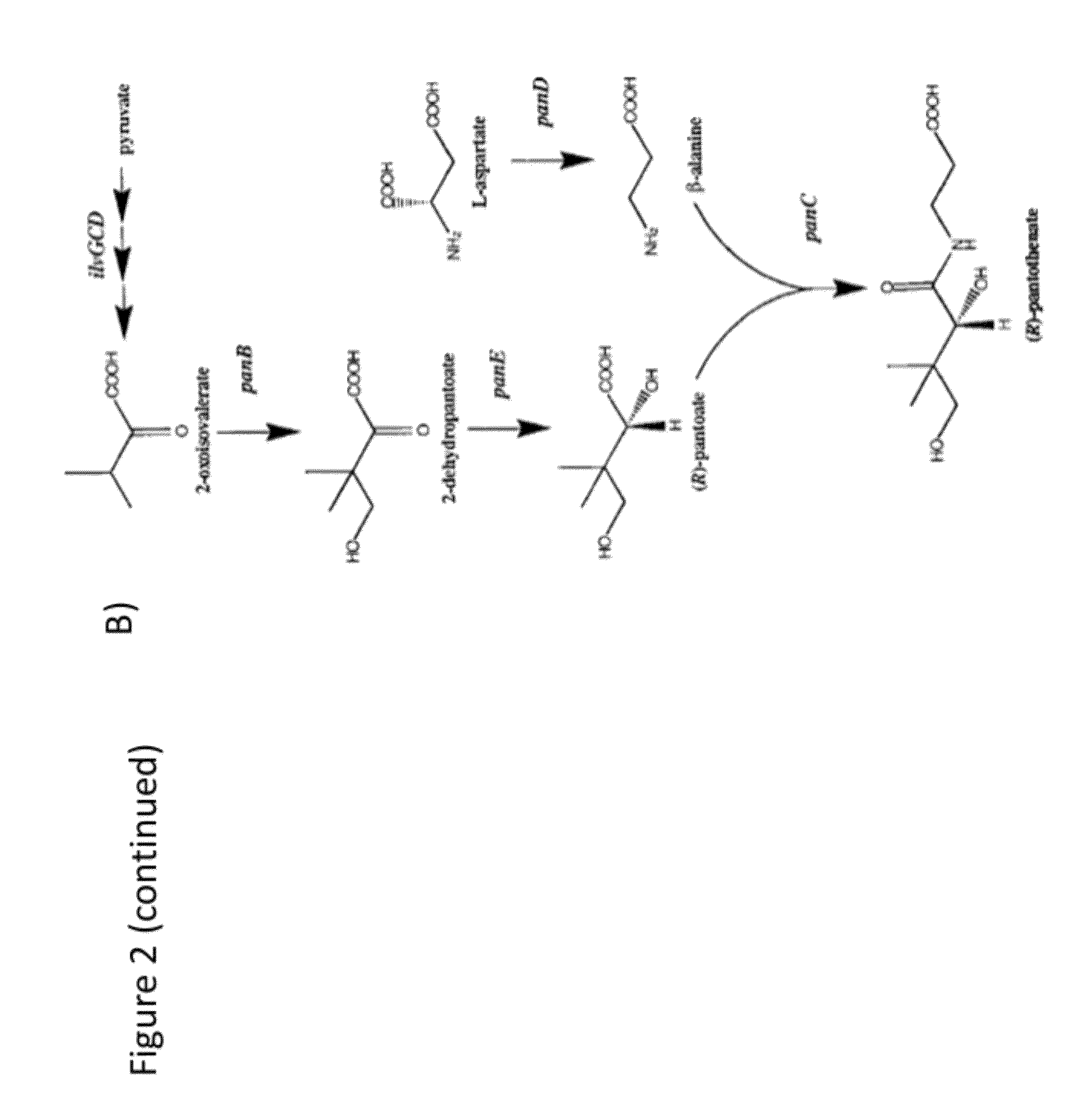Production of acetyl-coenzyme a derived compounds
a technology of acetylcoenzyme and derived compounds, which is applied in the direction of dna/rna fragmentation, biofuels, fermentation, etc., can solve the problems of increasing the overall yield and/or productivity of the strain, limiting the production of pantothenate, and only being produced by most living systems in insufficient quantities, so as to improve the stability of the strain, improve the effect of negative selective pressure on the production of hacd compounds and prolong the production of long sustained
- Summary
- Abstract
- Description
- Claims
- Application Information
AI Technical Summary
Benefits of technology
Problems solved by technology
Method used
Image
Examples
example 1
7.1 Example 1
[0216]This example describes an exemplary method for determining the cell density (OD600) of a yeast cell culture.
[0217]An 8 μL sample of a cell culture was combined with 92 μL of Triton OD Diluent (20 g / L Triton X-114, 200 mL / L PEG 200, 200 mL / L 100% ethanol, rest water) in a clear 96-well plate, the solution was agitated at 1,000 RPM for 6 minutes, and the OD600 was determined by measuring absorbance at 600 nm on an M5 spectrophotometer (Molecular Devices, Sunnyvale, Calif.).
example 2
7.2 Example 2
[0218]This example describes an exemplary Nile Red based method useful for determining the farnesene titer of yeast cell cultures.
[0219]A 98 μL sample of a cell culture was transferred into a 96-well black polystyrene flat bottom assay plate, and 2 μL of Nile Red (Invitrogen, Carlsbad, Calif.) dissolved at 100 μg / mL in DMSO was added to each well. Fluorescence levels were immediately measured on an M5 spectrophotometer with excitation at 500 nm and emission at 550 nm.
example 3
7.3 Example 3
[0220]This example describes an exemplary gas chromatography (GC) based method useful for determining the farnesene titer of yeast cell cultures.
[0221]Sample was extracted with methanol-heptane (1:1 v / v), and the mixture was centrifuged to remove cellular material. An aliquot of the methanol-heptane extract was diluted into n-heptane with 0.001% t-caryohyllene (which served as a retention time marker to monitor successful injection and elution during the specified GC oven profile) and then injected onto a methyl silicone stationary phase using a pulsed split injection. Farnesene was separated by boiling point using GC with flame ionization detection (FID).
PUM
 Login to View More
Login to View More Abstract
Description
Claims
Application Information
 Login to View More
Login to View More - R&D
- Intellectual Property
- Life Sciences
- Materials
- Tech Scout
- Unparalleled Data Quality
- Higher Quality Content
- 60% Fewer Hallucinations
Browse by: Latest US Patents, China's latest patents, Technical Efficacy Thesaurus, Application Domain, Technology Topic, Popular Technical Reports.
© 2025 PatSnap. All rights reserved.Legal|Privacy policy|Modern Slavery Act Transparency Statement|Sitemap|About US| Contact US: help@patsnap.com



